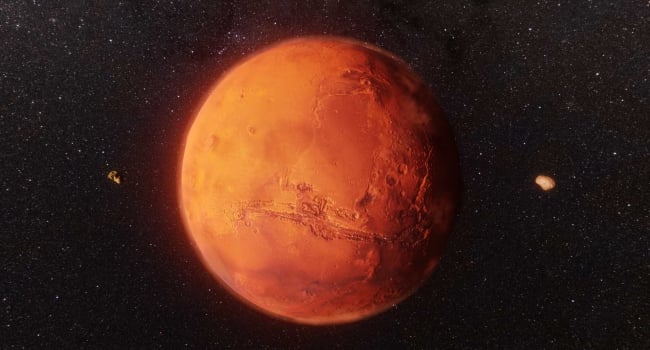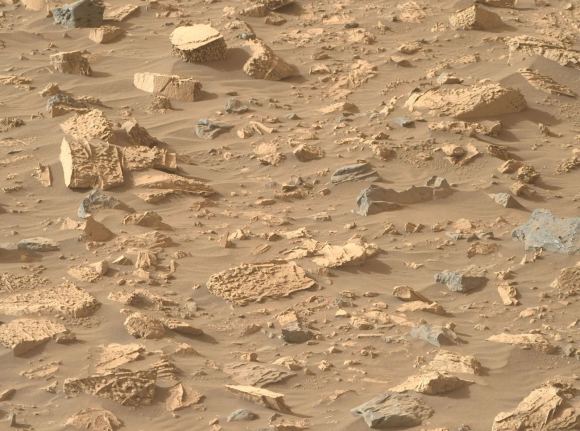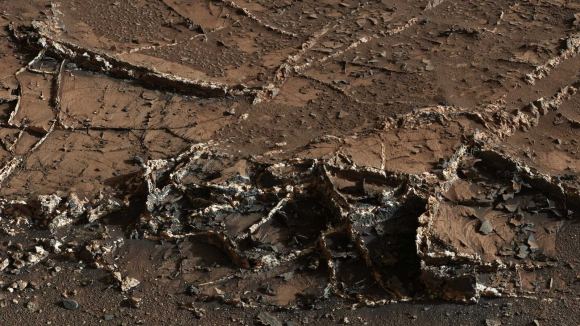
Perseverance discovers unusual rocks that look like popcorn on Mars
The Perseverance rover, continuing its mission on Mars, has made a new discovery: in the Jezero Crater, it found unusual rocks that look like popcorn. These findings may provide further evidence that water was present on Mars in the past.
The goal of the Perseverance mission is to search for signs of ancient life on Mars and explore environments that could support life. Jezero Crater was not chosen by chance: it is an ancient paleolake with a delta of sediments and other interesting geological features.
On Sol 1175 of its mission, Perseverance arrived in a region called Bright Angel, which is part of the riverbed that flows into Jezero Crater. The region is notable for its light-colored rocky outcrops, representing either ancient sediments or older rock exposed by the river.
The road to Bright Angel was not easy: the rover collided with a field of boulders, forcing operators to change their route, paving the way through a dune field and a river bed. This reduced travel time by several weeks.

Arriving at Bright Angel, the rover discovered unusual rocks that attracted the attention of geologists. Some of them were densely filled with spheres, which is why they were called “popcorn stones.” The rocks also contained many mineral veins, which occur when water carries minerals through the rock and deposits them.
Mineral veins are common on Earth, and their presence on Mars may indicate the presence of water in the past. Like mineral veins, the "popcorn" structure may also indicate that water flowed through these rocks.
The next step of the mission will be to determine the composition of the found stones. Perseverance will use its instruments to study the surface of the rocks in more detail, including analyzing the chemical composition using the SuperCam instrument suite. The decision to collect samples for possible return to Earth will depend on these results.
Once Bright Angel's exploration is complete, the rover will head south through the Neretva Valley to its next destination, the Serpentine Rapids. This region is also of great interest to scientists as it may contain further evidence of the presence of water and conditions favorable to supporting ancient life.

- Related News
- Powerful flare occurs in active part of Sun: What effect did it have on earth?
- China makes a historic breakthrough: Chang'e-6 probe delivers soil samples from the far side of the Moon
- NASA admits it cannot protect the Earth from asteroid collision
- Debris of Chinese rocket fell near the settlement (video)
- Will the Earth survive a nearby supernova explosion?
- ‘This innovation will change the world:’ Elon Musk confirms Starlink mini to be twice as cheap and fit in a backpack
- Most read
month
week
day
- NASA admits it cannot protect the Earth from asteroid collision 1371
- Strange iPhones without camera appear online: Are they for nuclear power plant workers? 1076
- Perseverance discovers unusual rocks that look like popcorn on Mars 917
- Why you can’t blindly trust AI: Because of the Google Gemini, a person almost became infected with botulism 840
- Stanford scientists introduce robot capable of accurately reproducing human movements, including in real time 799
- Will the Earth survive a nearby supernova explosion? 793
- What are the fastest growing AI cryptocurrencies? 767
- 6100 mAh battery, Snapdragon 8 Gen 3, 24 GB RAM: OnePlus Ace 3 Pro to be a flagship killer 694
- Nvidia becomes most valuable company in the world 635
- Jelly Max: World's smallest 5G phone 631
- Archive
